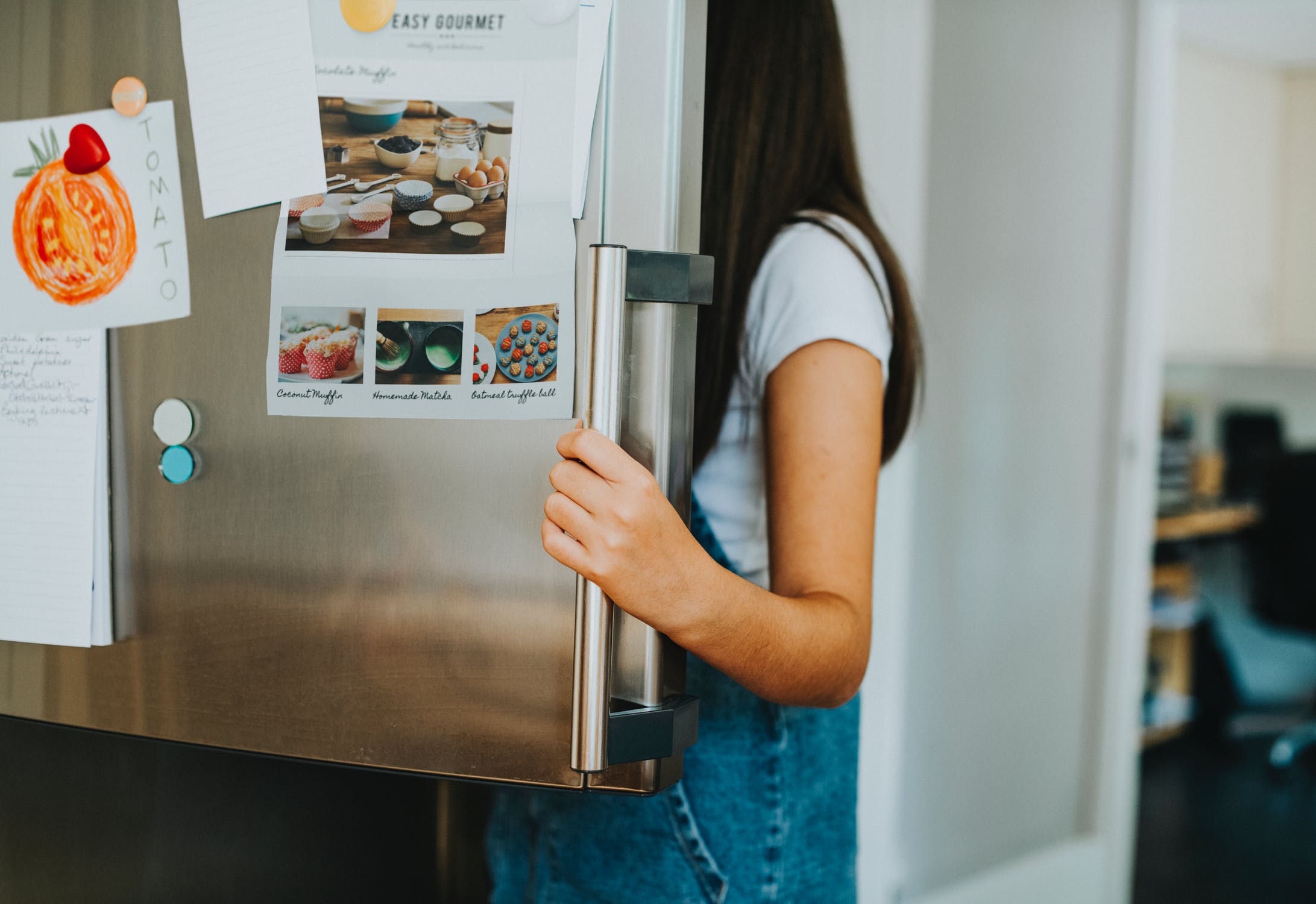
Plenty of the 48 million people who fall victim to foodborne illnesses each year couldn’t have done anything to avoid them. After all, we can only abide by those romaine lettuce recalls for E. coli and egg recalls for Salmonella after the Federal Drug Administration (FDA) reports them. But you wouldn’t believe how many food safety mistakes are in our hands…literally.
We’ve asked culinary professionals for the top food safety mistakes they see, along with tips on how to fix and avoid them. From refrigerating hot food to improperly prepping produce, these are the 9 faux pas you can’t afford to make in the kitchen anymore.
Mistake: Allowing food to enter the temperature danger zone.
Bacteria multiplies between 40°F and 140°F, which is known as “the danger zone” when it comes to food safety. In fact, bacteria levels can double in just 20 minutes in this temperature, according to the U.S. Department of Agriculture (USDA).
How to fix it: Refrigerate cooked food within two hours. Keep hot food hot—rather than just lukewarm or room temperature—in a slow cooker or over simmer. And keep cold foods chilled by serving them over ice.
Mistake: Refrigerating hot leftovers.
The danger zone isn’t just something that can happen on your table or outside. You can also cause your fridge to enter a heat wave if you place still-hot leftovers inside.
How to fix it: Allow hot food—such as stews, casseroles, and pastas—to cool on the counter or stovetop.
“The FDA recommends cooling foods to 70°F within the first two hours after cooking and 40°F within four hours after that,” explains Lisa McManus, executive tasting and testing editor at America’s Test Kitchen in Boston, Massachusetts. “We stay within these guidelines by cooling food on the countertop for about an hour, until it reaches 80°F to 90°F (food should be just warm to the touch), then transferring it to the fridge. A good investment is an instant-read thermometer, so you can quickly check for safe temperatures.”
And while you’re waiting for the big chill, label your leftovers by name and creation date (a strip of masking tape and a permanent marker are the perfect tools for the job). That way, you and your family are always well-informed about what’s safe to eat.
“Plan on getting rid of leftovers more than a week old,” says Tom Beckman, chef instructor at Auguste Escoffier School of Culinary Arts in Chicago, Illinois.
Mistake: Washing chicken prior to cooking.
Poultry doesn’t need a spa day. Actually, you can save time and your health by not washing chicken.
“I’m always amazed at how often I see people washing or at least rinsing meat,” says Beckman. “Chicken should never be rinsed, as it will spread the potential contaminants all around the sink area.”
How to fix it: Before preparing your chicken, grind pepper, select your salt, prepare the herbs and spices, and place them all into a small bowl for seasoning the raw meat. That way, you don’t need to touch the pepper mill or salt box with contaminated hands.
Then, “just pat chicken—and other meats—dry with paper towels, and throw them away immediately,” suggests McManus.
Now you’re ready to season the meat, but be sure to “throw the rest of the salt and pepper away, wash the bowl and wash your hands and anything else you touched, using hot, soapy water,” according to McManus.
Mistake: Prepping produce improperly.
You also don’t need to re-wash pre-washed greens, but you should wash produce that hasn’t been cleaned yet.
“Pre-washed produce is likely to have fewer bacteria—or none at all—than your kitchen sink or counter, and washing the greens may actually introduce bacteria,” McManus says. “We took swabs from pre-washed lettuce straight from the bag and swabs from lettuce we re-washed in the test kitchen. The re-washed lettuce grew bacteria in a petri dish, while the untouched pre-washed greens did not.”
Alternatively, Ryan Pfeiffer, executive chef at Blackbird in Chicago, Illinois, says it’s important to wash produce that hasn’t gone through the wringer yet. “This is especially important for things that grow in or close to the ground, including root vegetables,” he says.
How to fix it: Use pre-washed produce as-is; otherwise, “strong washing should be done on potatoes and other root vegetables, like carrots and parsnips. Special care should be taken with berries as to not ruin them,” Beckman says.
When it comes to berries, rinse gently and immediately before use. Generally, you should rinse all fruit before you cut them to avoid introducing contaminants on the skin to the flesh, to limit impact to the quality of the produce, and to reduce the speed of oxidation.

Mistake: Setting your refrigerator temperature too high.
The ideal forecast for your refrigerator is 40°F, and your freezer should be 32°F or below, McManus says.
How to fix it: “We recommend buying a fridge and freezer thermometer. Use it and check it often to guarantee your fridge and freezer are operating correctly and safely,” she says.
Mistake: Cracking eggs on the rim of a bowl.
Feel free to get cracking, but do so away from the vessel that will hold all of your raw ingredients.
“Cracking the eggs on the edge of the bowl may get some shell in the recipe—thereby contaminating all the ingredients,” Beckman says.
Plus, you may spread some white or yolk residue onto the outside of the bowl that can drip down to the countertop.
How to fix it: Tap the egg on your counter, then open it into a small, separate bowl. Check egg for quality and add then add it to the larger bowl. Immediately sanitize the counter.
Mistake: Contaminating your cutting boards.
Using a large cutting board makes it easier to prep a lot of ingredients quickly and easily, but it can also be a recipe for cross-contamination.
How to fix it: Sanitize your cutting board before beginning any meal prep. Then use hot, soapy water before and after each use, according to the USDA. Invest in one cutting board to dedicate to meat and another cutting board for produce.
“When people use flimsy thin cutting boards that are too small for the task, they tend to get a little lax with sanitation. Thin cutting boards can also lead to injury as they may slip more,” Beckman says. He suggests investing in a quality bamboo or wood board. And be sure to replace any overly-worn cutting boards with deep, tough-to-clean grooves.
Also, don’t forget to set up a safe space for slicing. “Put a couple of wet paper towels or a kitchen towel under your cutting board to stabilize it on a flat counter,” says Ross Henke, executive chef at Quiote in Chicago, Illinois. “I don’t know how many times I’ve seen my mom chopping vegetables as the cutting board slowly runs away from her, or she balances it ever so slightly over the kitchen sink to ‘make clean up easier.’”
Mistake: Defrosting food on the counter.
Just because generations before us did it, doesn’t mean it’s a good idea. “Don’t defrost food by leaving it out on the counter. And once it’s defrosted, don’t refreeze it,” McManus says.
How to fix it: The fridge is your friend. Most small pieces of food can be defrosted in the refrigerator overnight, Beckman explains, although whole chickens and turkeys may take a few days to fully defrost.
“Transfer frozen ingredients to the fridge to let them gently and safely defrost. Before you do so, move the items into a pan, bag, or bowl to catch any drips,” McManus says. “Defrost everything on the bottom shelf so nothing drips onto other food.”
Mistake: Allowing pantry staples to go bad.
You’re well aware that fruits, vegetables, meat, and dairy products can spoil. But did you know that many items that are typically stored at room temperature can too? Often, the culprit is small amounts of fat that go rancid.
How to fix it: “Dry yeast should be kept in the freezer unless it is used every day. Instant and active dry yeasts can be kept in the refrigerator for up to a year with no detriment,” Beckman says. “Flour and nuts can also be kept in the freezer, as they have components that will go bad in a few weeks if kept at room temperature.”
Also, buy small quantities of oil—as much as you estimate you’ll use in a month—and store at room temperature, he adds.

























